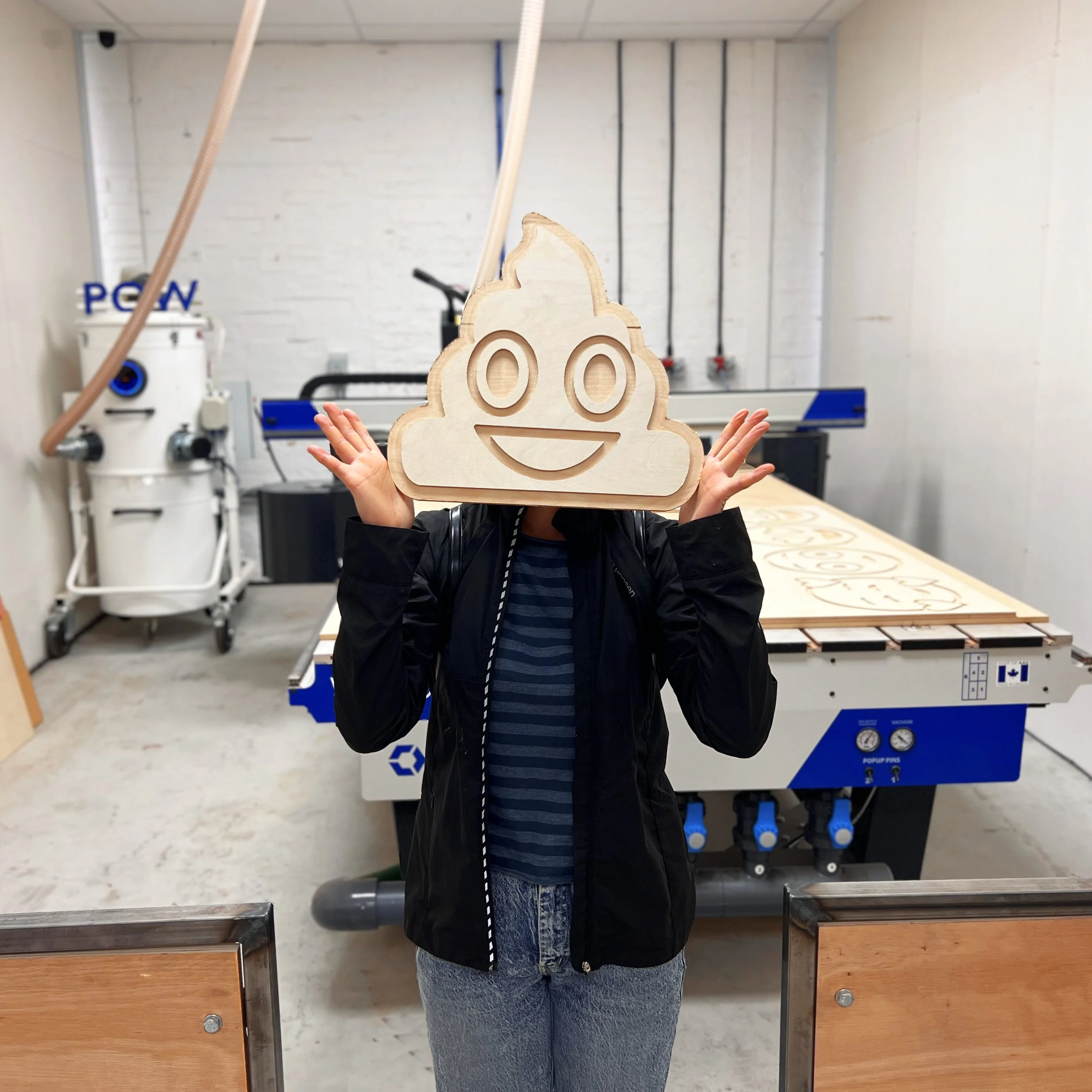Fabrication Services
POW’s fabrication team can help you bring your ideas to life. We specialise in laser cutting, CNC machining & custom project & furniture builds.
LASER CUTTING
POW’s fabrication team can help you bring your ideas to life. We specialise in laser cutting, CNC machining & custom project & furniture builds.
Regular (5 to 7 day turnaround):
$2.50/minute with a $50 minimum*
Rush (less than 5 days):
$3.75/minute with a $75 minimum*
Same Day:**
$5/minute with an $100 minimum*
Approximate Cutting Time based on materials
Thin things (ie. paper): 50 inches per minute
3mm acrylic or baltic birch plywood: 30 inches per minute
6mm acrylic or baltic birch plywood: 15 inches per minute
*Additional charges may apply for design, file prep, and processing.
**Subject to availability
RATES
CNC MachininG
Our CNC routers can cut MDF, plywood, hardwood, plastics, and aluminium up to 4'x8'. It's great for furniture, signs, and anything that has a 2D profile.
Regular (1 to 2 week turnaround):
$3.00/min with a $150 minimum*
Rush (less than 1 week):
$4.50/min with a $225 minimum*
Same Day:**
$6.00/min with a $300 minimum*
Removing Tabs $1 per tab
*Additional charges may apply for design, file prep, and processing.
**Subject to availability
RATES
CUSTOM FABRICATION & PROJECTS

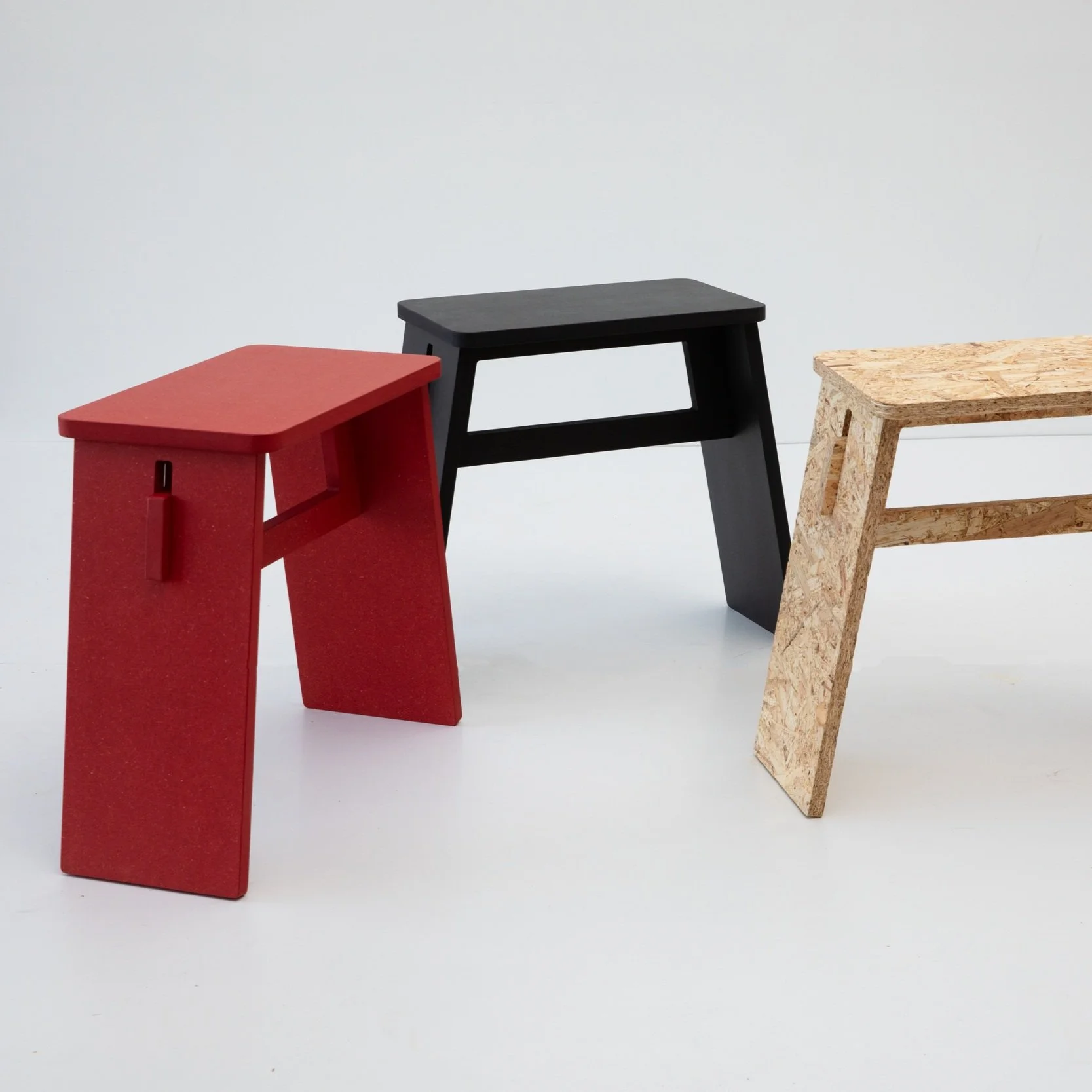
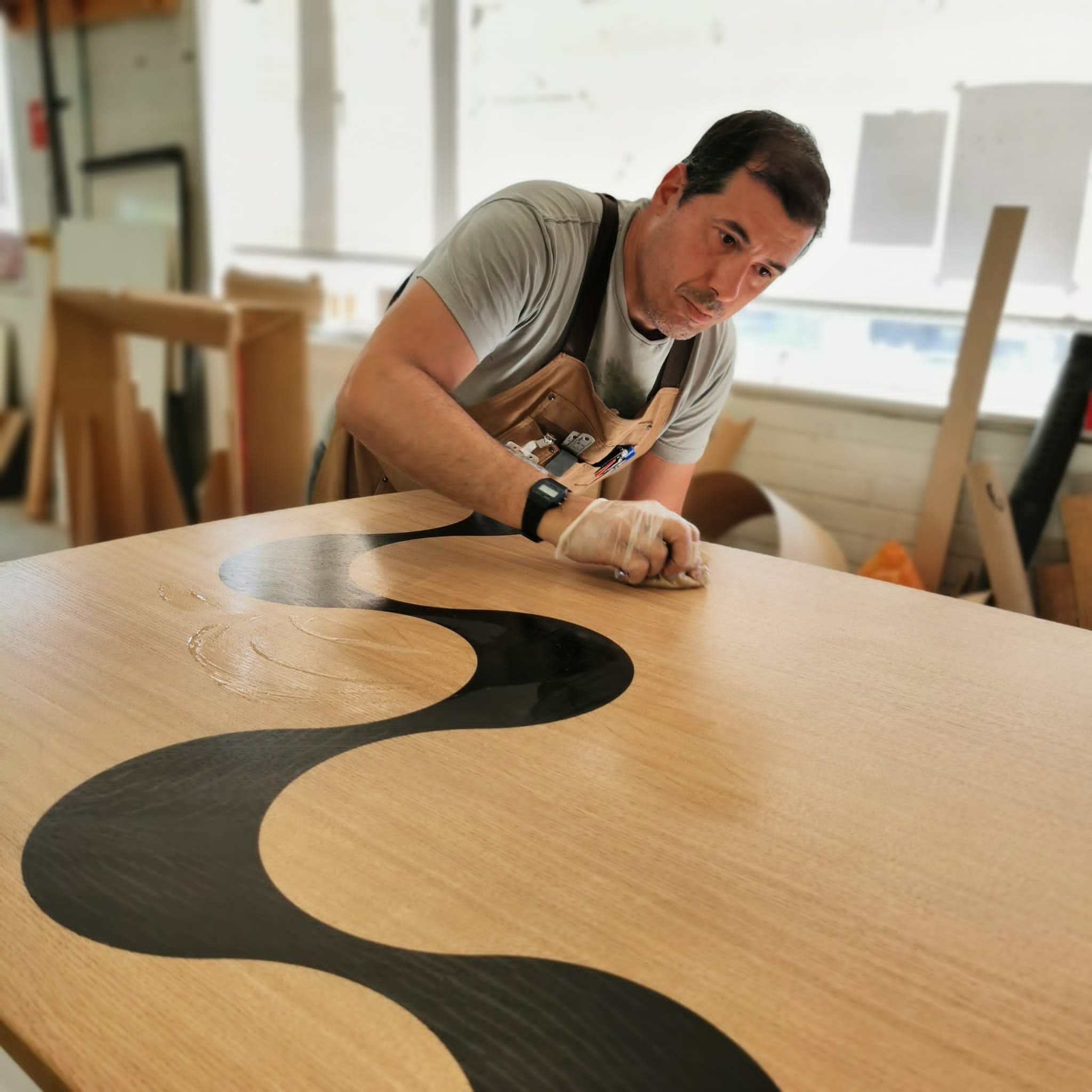

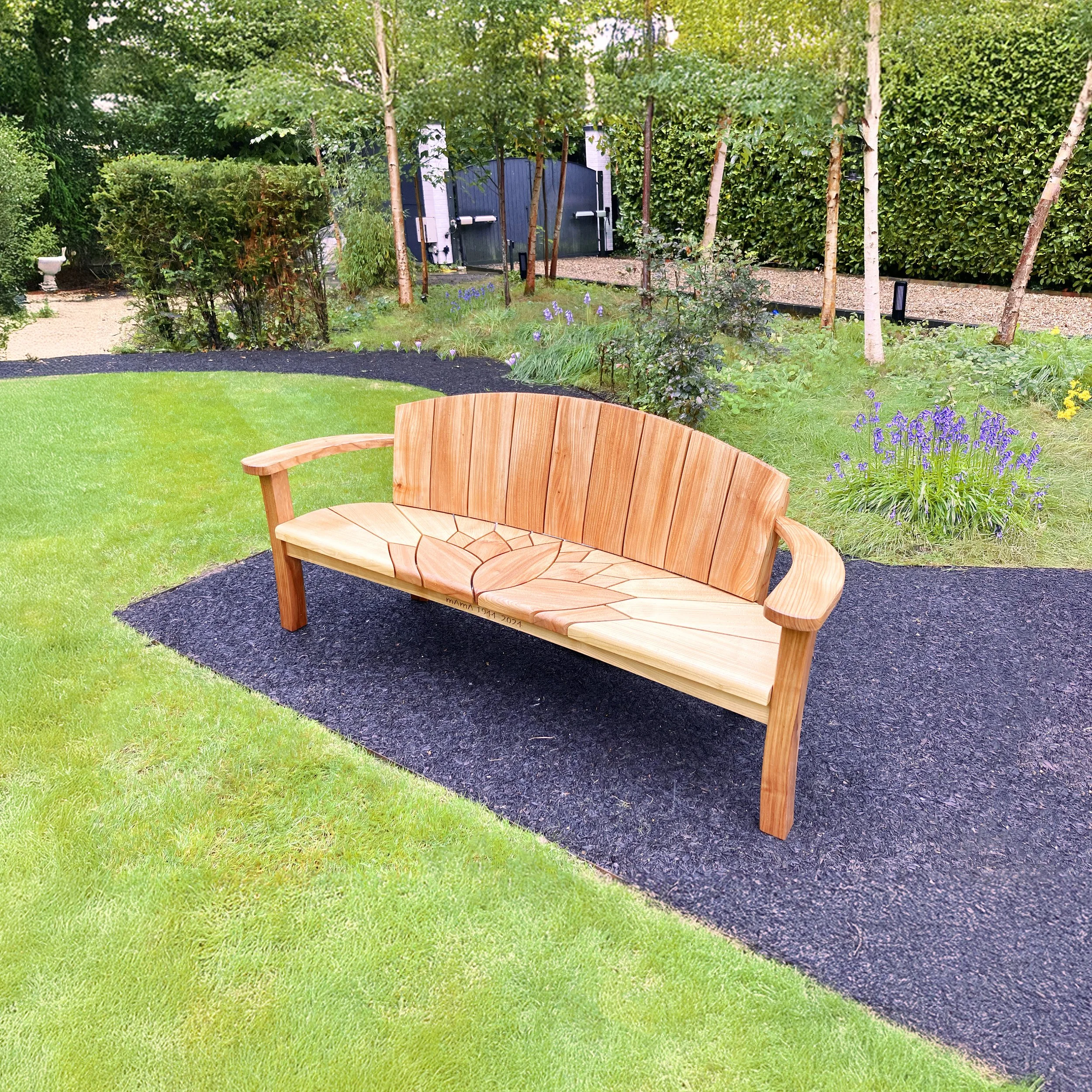
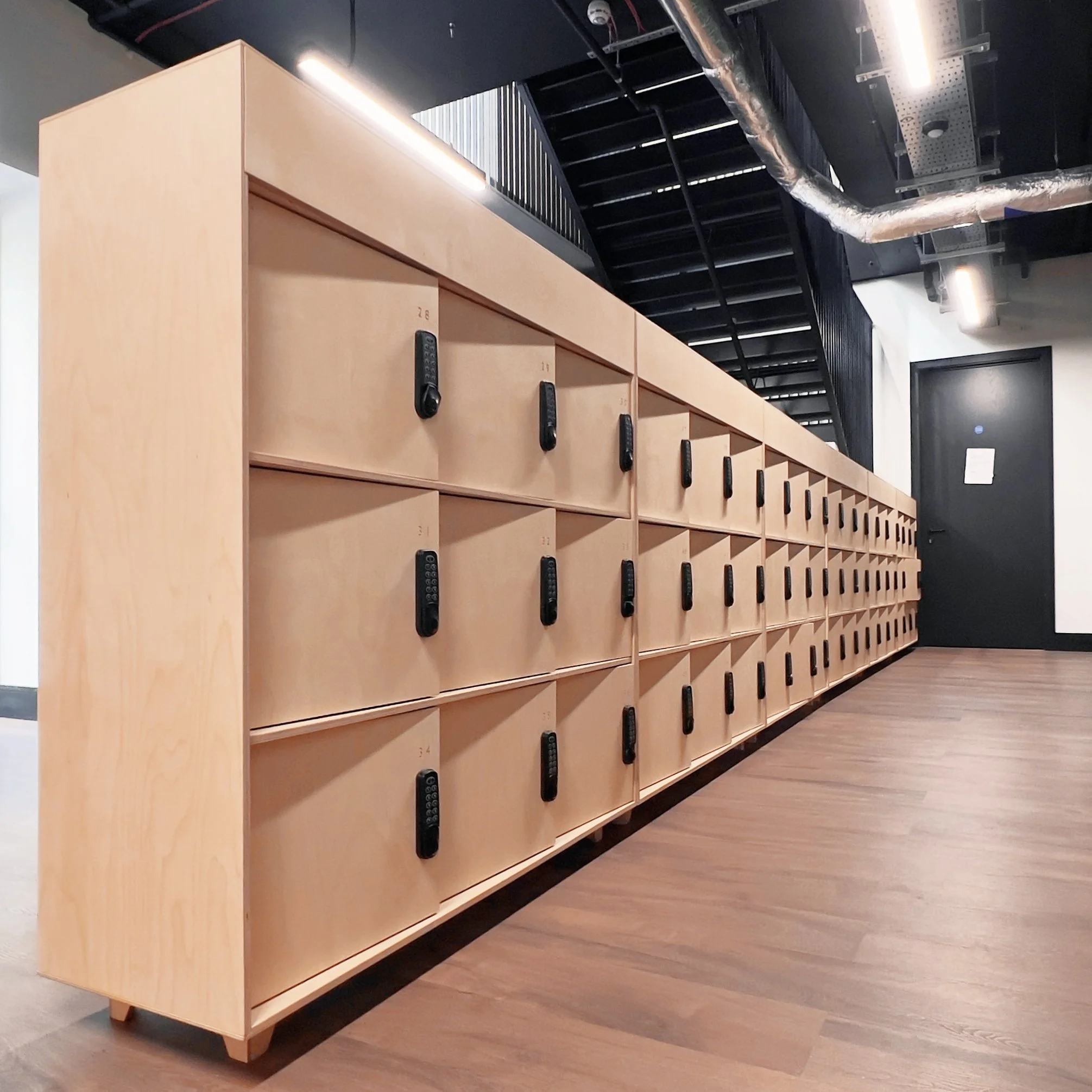

We make and manage commissions for individuals, public bodies, offices, architects, designers, and everyone in between.
Design Work
File Setup
Woodworking
Finishing & Oiling
SERVICES
FREQUENTLY ASKED QUESTIONS
-
File Format Requirements
Accepted formats: DXF, DWG, AI, PDF, or SVG
Version compatibility: DXF/DWG saved in 2014 or earlier format
Single file submission: All cut lines in one file (avoid multiple files for one project)
Design Specifications
Units clearly defined: Specify mm or inches in filename or notes
Scale verification: File is drawn at 1:1 scale (actual size)
Line weights:
Cut lines: 0.25mm or thinner
Etch/engrave lines: Clearly differentiated from cut lines
Colour coding:
Engraving: Black
Cutting: Red
Tracing/scoring: Blue
Layer organisation: Different operations on separate layers if applicable
Geometry Requirements
Closed paths: All cut lines form complete, closed shapes
No overlapping lines: Remove duplicate or overlapping vectors
Minimum feature size:
Details ≥ 1mm for wood/plastic
Details ≥ 0.5mm for thin materials
Minimum spacing: 2mm between cut lines minimum
No tiny segments: Avoid line segments shorter than 0.1mm
Technical Considerations
Material specification: Clearly state material type and thickness
Quantity specified: How many pieces needed
Kerf compensation: Indicate if kerf adjustment is required
Grain direction: Specify for wood projects (if critical)
File Preparation
Text converted: All text converted to outlines/curves
Grouped objects ungrouped: Ungroup all elements
Effects removed: No filters, effects, or bitmap elements
Clean file: Remove construction lines, dimensions, and notes from cut file
-
File Format Requirements
3D files: STEP, IGES, or native CAD files (SolidWorks, Fusion 360, etc.)
2D files: DXF, DWG (for profile cutting only)
Toolpath files: Only if specifically requested - G-code in standard format
Design Specifications
Units clearly defined: Model created in mm or inches (specify which)
Origin placement: Set origin at logical reference point
Scale verification: Model is actual size (1:1 scale)
Orientation: Part oriented for optimal machining direction
Geometry Requirements
Minimum radius: Internal corners ≥ 1.5mm radius (3mm+ preferred)
Draft angles: 1-2° draft on vertical walls where possible
Feature accessibility: All features accessible with standard end mills
Undercuts avoided: No overhanging features requiring special tooling
Technical Specifications
Material specified: Type of wood and exact thickness
Tolerance requirements: Critical dimensions and tolerances noted
Surface finish: Specify required surface quality
Quantities: Number of pieces needed
Machining Considerations
Minimum wall thickness: ≥ 3mm for structural integrity
Deep pocket limitations: Depth-to-width ratio considerations
Grain orientation: Critical for strength (specify if important)
Fixture planning: Consider how part will be held during machining
Documentation
Assembly drawings: If multiple parts, show how they fit together
Critical dimensions: Highlight most important measurements
Special instructions: Note any specific requirements or concerns
Reference edges: Indicate which edges are most critical for accuracy
-
Yes, we can help you source materials
-
We will send you an online invoice prior to starting your job, and require payment in full in advance.


